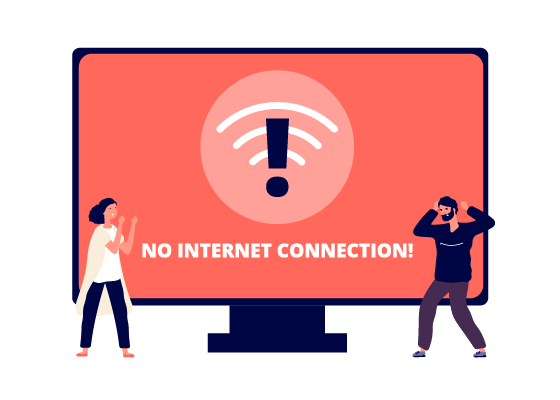
As technology continues to advance, more and more people are turning to online learning for their education. Online learning, also known as e-learning, has gained immense popularity in recent years due to advancements in technology and increased access to the internet. This mode of education offers numerous benefits, but it also comes with its fair share of challenges.
In this article, we will look at the benefits of online learning and explore some of its key challenges.
Benefits of E-Learning:
Flexibility and Convenience
One of the most significant advantages of online learning is its flexibility. Learners can access course materials and complete assignments at their own pace and convenience. This makes it ideal for individuals with busy schedules or those who want to balance work, family, or other commitments with their studies.

In addition to being flexible, online courses are also convenient. You don’t have to worry about traveling to class or finding child care for your kids—you can complete your classes right from home! Many online programs are offered in an asynchronous format, which means that you can study at your own speed without having to worry about keeping up with a set deadline.
Cost-Effectiveness
Online courses are often more affordable than traditional on-campus programs. Learners can save on commuting, accommodation, and study materials. Additionally, many e-learning platforms offer free or low-cost courses, making education more accessible to a broader audience.
With an average cost of $20-$25 per credit hour at a traditional institution, online learning can be significantly cheaper than the traditional classroom experience. Online students often have the option of taking one class at a time or completing an entire degree program without having to live near campus or spend time commuting to classes. This makes it possible for working adults to earn their degrees without sacrificing their careers or family responsibilities.
Personalized Learning
E-learning platforms can use algorithms to tailor course content to individual learners’ needs and preferences. This personalized approach enhances the learning experience and helps students grasp concepts more effectively.
The ability to personalize e-learning content is one of the key advantages of online learning over traditional classroom learning. Online courses are designed to help students learn at their own pace and at times that suit them, which means they can focus on what they need to know rather than what’s being taught in a particular class at a particular time.
Continuous Learning Opportunities
Online courses provide a wide range of subjects and skill levels. Learners can acquire new skills or enhance their existing ones, fostering a culture of continuous learning and professional development.
There are many ways in which individuals can learn online: through webinars, podcasts, MOOCs (massive open online courses), e-learning platforms such as Moodle, and virtual classrooms. These options allow learners to access content whenever they want and at whatever time suits them best. In addition, there are many different types of online course available on offer: lectures, exams and assignments; self-paced courses; peer-reviewed study groups; interactive tutorials; virtual laboratories; virtual classrooms with live instructors; discussion boards; blogs; wikis; simulations etc.
Self-Directed Learning
E-learning encourages self-discipline and responsibility in students. Learners must manage their time efficiently and take the initiative to complete their studies successfully. They are expected to be self-directed learners. This is because they have to be responsible for their own learning process, with minimal guidance from instructors or facilitators at times.
Students are also required to be more disciplined when it comes to their academic work load compared to traditional learning methodologies such as face-to-face instruction. They need to plan their study time effectively in order to achieve their goals successfully.
Challenges of E-Learning:
Lack of Face-to-Face Interaction
Online learning may lack the personal touch of traditional classrooms. The absence of in-person interaction with instructors and peers can lead to feelings of isolation and hinder collaborative learning experiences. While there are many benefits to online learning, such as convenience, flexibility and affordability, there are also some downsides. One major disadvantage is the lack of face-to-face interaction. This can be detrimental to learning because students need to interact with others in order to learn effectively.
Technical Issues

There is one significant challenge that comes with attending online lectures, and that’s technical issues. Technical problems such as internet connectivity issues, server downtimes, or compatibility problems with devices can disrupt the learning process and cause frustration among learners.
The good news is that these issues can be prevented by using modern technology in the classroom. Here are some simple tips for avoiding technical problems:
• Make sure your computer is running on a stable operating system and has enough RAM to run your course software.
• Ensure you have a good internet connection with no issues like slow download speeds or frequent disconnections.
• Test all devices before class starts so they don’t interfere with your ability to participate in class discussions or do assignments.
Self-Motivation and Time Management
E-learning demands a high level of self-motivation and time management skills. Without regular class schedules and reminders, some learners might struggle to stay on track with their studies. Part of the challenge is that you’re learning at your own pace, rather than with other people who have similar goals and expectations. The good news is that there are ways to motivate yourself without needing to rely on someone else’s schedule or reminders.
The first step is to set achievable goals for yourself and follow through on them daily. If you want to finish your degree in two years instead of four, then do the math and figure out how many hours each week you need to spend studying. Then, schedule those hours into your calendar so that they become part of your routine—and don’t allow anything else to interfere with them!
If something comes up (like an emergency), make an exception for one week, but then get back on track afterwards as soon as possible. Giving yourself permission not to do everything perfectly all the time will help you avoid burnout down the road!
Plagiarism and Academic Integrity
s online learning becomes more sophisticated, the risk of plagiarism and academic dishonesty increases. Instructors must implement measures to ensure academic integrity is upheld.
Plagiarism is defined as the act of taking someone else’s work or ideas and passing them off as your own. The digital nature of online learning makes it possible for students to copy and paste sections of text from other sources without properly citing them. Instructors can use plagiarism detection software to detect instances of plagiarism in student assignments, but they must also educate students on how to avoid the act in the first place.
Academic dishonesty encompasses a range of behaviors that violate standards of academic integrity including plagiarism, cheating, lying, fabrication, and falsification. Instructors can take steps to prevent these behaviors by ensuring there are clear expectations for student conduct and providing regular reminders about how to uphold those expectations.
Assessment and Proctoring
Assessing online learners’ performance authentically can be challenging. Ensuring the fairness and security of exams, especially in a remote setting, might require sophisticated proctoring systems. Authentication is the process of verifying that an exam taker is who they say they are. This can be accomplished through a variety of methods, such as scanning a student’s ID card or checking their photo against a database of approved students.
Proctoring is the act of monitoring an exam to ensure that it is being taken appropriately by the student taking it. This can include things like making sure no one else sees the student or monitors their screen or that they do not leave their computer unattended during the exam.
However despite the challenges, e-learning continues to evolve and adapt, offering innovative solutions to improve the learning experience. Hybrid learning models, which combine elements of both online and traditional education, are also becoming popular to leverage the advantages of both approaches. Ultimately, the success of e-learning depends on effective course design, robust technical infrastructure, and the commitment of both educators and learners to make the most of this versatile mode of education.
RUCHI RATHOR Founder & CEO
Payomatix Technologies Pvt. Ltd.
FOUNDER AND INVESTOR | PAYMENTS PROCESSING EXPERT | MERCHANT ACCOUNT SOLUTIONS | WHITE LABELLED PAYMENT GATEWAY | Dreamer, Creator, Achiever, Constantly Evolving
Website Ruchi Rathor: https://ruchirathor.com
Website Healing Heart https://thehealingheart.me/
Instagram https://www.instagram.com/ruchirathor/
LinkedIn https://www.linkedin.com/in/ruchirathor12/
Facebook https://www.facebook.com/ruchi.rathor.magnificient
Tumblr https://www.tumblr.com/blog/ruchirathor-thehealingheart
Medium https://medium.com/@ruchirathor_23436









